[Editor’s Note: Mad Scientist Laboratory welcomes back returning guest blogger LTC Arnel David, U.S. Army, and newcomer Maj Aaron Moore, British Army, with their evocative post describing the nascent revolution in Professional Military Education (PME) wrought by the convergence of Artificial Intelligence (AI), digital assistants, gaming, and Augmented and Virtual Reality (AR/VR). Using storytelling and backcasting, LTC David and Maj Moore vividly describe how Leaders will seek out and leverage these technologies to hone their warfighting skills across all dimensions, enhancing their overall competitiveness for command. Read on to learn how this revolution is already underway today!]

2030 is a big year. Your name is Maddie Lena Novák. You are competing to assume command of one of the UK’s newly formed cross-dimension manoeuvre teams (XDMT) within 6 (UK) Division. This is a time when the great power competition that began to emerge in the previous decade, is now in full swing. The powers of the United States and China consciously engage in sub-threshold activity, competing against each other’s interests in a zero-sum scenario reminiscent of the Cold War. The United Kingdom has not been a neutral player in this dynamic. The UK is currently involved in proxy conflicts across many regions of Africa, and remains heavily involved in reassurance and deterrence activities on Europe’s eastern borders. As you prepare for the board competition for command of the XDMT, you reflect on the career that led you to this point. Much of it spent deployed on operations and when home, ruthlessly focussed on gaming and fighting, to hone your skills as a fighter in all dimensions.
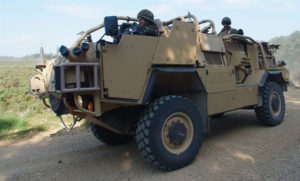 The time in your early career as a light cavalry officer in multiple deployments to Africa, conducting Defence Engagement activity in proxy conflicts, and then guarding NATO in Eastern Europe, taught you much about the limitations of the blunt application of hard power. Over time, you observed the rapid changes to the character of conflict and competition. The ubiquity of sensors, AI-enabled kill chains, and a highly saturated information environment, combine to create a maelstrom of complexity for warfighters to navigate.
The time in your early career as a light cavalry officer in multiple deployments to Africa, conducting Defence Engagement activity in proxy conflicts, and then guarding NATO in Eastern Europe, taught you much about the limitations of the blunt application of hard power. Over time, you observed the rapid changes to the character of conflict and competition. The ubiquity of sensors, AI-enabled kill chains, and a highly saturated information environment, combine to create a maelstrom of complexity for warfighters to navigate. 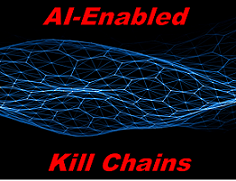 Adversaries across the world are now able to employ cheap and sophisticated autonomous systems across long ranges with fully integrated fires layers. You realised that fighting well required skills outside traditional combined arms assignments.
Adversaries across the world are now able to employ cheap and sophisticated autonomous systems across long ranges with fully integrated fires layers. You realised that fighting well required skills outside traditional combined arms assignments.
Your curiosity about information and influence led you to complete a role conversion in 6th Division after subunit command. You spent several years leading an information manoeuvre detachment where you were able to leverage your native Polish language skills and Eastern European geopolitical knowledge. 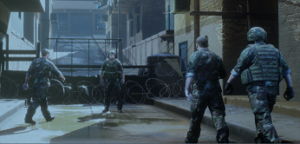 Being born to a Welsh mother and Polish father gave you a diverse outlook. You remember contributing to the Human Domain Matrix (HDM) virtual reality simulation where you provided input to a highly successful Balkan scenario that trained multiple teams for deployment. This highly curated scenario gave teams knowledge of the psycho-social and emotional triggers of the local population. It was a powerful simulation and it was then that you became keen to try out UK Fight Club where HDM was first developed.
Being born to a Welsh mother and Polish father gave you a diverse outlook. You remember contributing to the Human Domain Matrix (HDM) virtual reality simulation where you provided input to a highly successful Balkan scenario that trained multiple teams for deployment. This highly curated scenario gave teams knowledge of the psycho-social and emotional triggers of the local population. It was a powerful simulation and it was then that you became keen to try out UK Fight Club where HDM was first developed.
Immersive technologies (as shown in this short video clip) will revolutionize PME.
The British Army has developed an innovative partnership with Hollywood to bring the latest virtual reality, CGI, and AI technology to its Soldiers with an approved pilot for the Human Domain Matrix VR simulation. This VR experience will be a first of its kind and they are working with the producer of Mad Max: Fury Road, and the motion capture and technical leads for the Lord of the Rings and the new Star Wars: The Mandalorian. These ideas sprung from the science fiction writing done right here on the Mad Scientist Laboratory blog site here and here. The initial prototype will be complete before the end of 2020.
Fight Club was still young, but you helped influence its growth by collaborating with other partner nations to develop high-level wargames to stress test theories of competition in grey zone operations. Your vivid imagination and relentless energy were infectious as you designed the most creative games ever played. Your network of academics, industry partners, scientists, and fellow warfighters has helped elevate your thinking about warfare and competition. Your top standings on multiple leader boards gave you a reputation of competence and professional excellence. The data driven Fight Club gave you routine feedback which facilitated a bespoke PME to augment the standard institutional courses. Where your dad’s generation of officers spent extra time perfecting PowerPoint and Excel, you clocked over 10,000 hours becoming a virtuoso in gaming and adaptive thinking.

Commanding a combined arms unit has been your goal since you first left the Royal Military Academy at Sandhurst 12 years ago. You were selected in a very competitive process for this command against several peers, all of whom had a “traditional” combat arm officer’s career. Following a non-traditional path, you were sceptical of your chances, but due to the expertise you have displayed over the course of your operational experience, and the skills forged through Fight Club, you left the institution little choice but to select the clear front runner with battle-tested talent.
You snap back to the present and focus back to the board at hand. The board is virtual and takes a full day of focus and mental agility. The early tests check your understanding of service and joint doctrine and tactics, as well as current events and key concepts from international relations, military history, and theory. It is challenging, but you score well because of your operational experiences and bespoke PME. After the mentally exhaustive academic portion, you are given a rapid planning exercise and simulation to complete. Thanks to 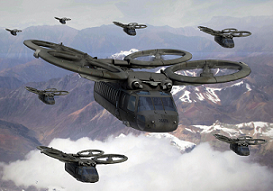 the many ‘reps and sets’ in Fight Club, this portion of the testing was enjoyable and easy. In less than two hours you develop a comprehensive plan to conduct an air assault operation as part of a larger Joint force.
the many ‘reps and sets’ in Fight Club, this portion of the testing was enjoyable and easy. In less than two hours you develop a comprehensive plan to conduct an air assault operation as part of a larger Joint force.
You utilised a suite of planning tools that were developed from Fight Club participants over multiple years that helped organise your thinking. You used software on your personal computer to simulate your courses of action. The data populated into your cloud-based AI assistant, “JARVIS,” who also took time to cull data from other sources to prepare you for the final simulation. You fight your plan in a simulation against an AI-enabled opposing force that has a wide range of autonomous systems and platforms.  JARVIS, which stands for Joint Assisted Recollection of Virtual Intelligence System, is able to prompt you with considerations at every turn and this human-machine collaboration gives you speed and agility that is unmatched by other board competitors. The game’s adversary attempts to modify its defence based on your actions, but it is unable to match your decisive moves which exposes vulnerabilities you are able to exploit with great effect. Your ability to coordinate effects across all dimensions is harmonious and lethally effective, giving you windows of opportunity for Joint convergence. You are the only officer to integrate Joint effects to such a degree.
JARVIS, which stands for Joint Assisted Recollection of Virtual Intelligence System, is able to prompt you with considerations at every turn and this human-machine collaboration gives you speed and agility that is unmatched by other board competitors. The game’s adversary attempts to modify its defence based on your actions, but it is unable to match your decisive moves which exposes vulnerabilities you are able to exploit with great effect. Your ability to coordinate effects across all dimensions is harmonious and lethally effective, giving you windows of opportunity for Joint convergence. You are the only officer to integrate Joint effects to such a degree.
You recall how this type of simulation during a Fight Club competition pushed you to your limits and how without that experience, you surely wouldn’t have been able to react so quickly. Unlike reading a book or watching a movie, the wargames in Fight Club 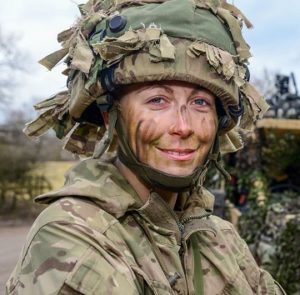 gave you experiential learning that is hard to replicate. Over the years, you were able to use tools to do different things, rather than just do the same things differently. At this board, it clearly gave you an edge. You excelled at the board and were the top choice to take command of the XDMT. Years of hard work and gaming in Fight Club paid off.
gave you experiential learning that is hard to replicate. Over the years, you were able to use tools to do different things, rather than just do the same things differently. At this board, it clearly gave you an edge. You excelled at the board and were the top choice to take command of the XDMT. Years of hard work and gaming in Fight Club paid off.
Your first initiative in command is to improve the knowledge database of gaming to help improve the neural networks that support the division’s Agile C2 systems. You intend to take the data and results of all wargaming to directly feed into a  wider repository of lessons learned for UK Joint doctrine, as well as feed into the algorithms of the assisted decision-making tools that run software like JARVIS. The goal is to have a Waze-like battlefield on your next deployment where a highly integrated sensor-shooter network provides rapid kill chains that are deadly, decisive, and ultimately, a continued deterrent to any would-be adversary.
wider repository of lessons learned for UK Joint doctrine, as well as feed into the algorithms of the assisted decision-making tools that run software like JARVIS. The goal is to have a Waze-like battlefield on your next deployment where a highly integrated sensor-shooter network provides rapid kill chains that are deadly, decisive, and ultimately, a continued deterrent to any would-be adversary.
You will push for wider membership of Fight Club within your unit, but do not force it because, as you have learned, you can’t make people fight and innovate. You can only create the conditions that enable them to do so. It is your firm belief that we must all strive for professional excellence and maintain a culture of process that keeps people thinking, fighting, and learning from each other. Fight Club  provides this ‘safe to fail’ platform for all leaders of the future, regardless of rank or cap badge, to hone their skills and connect with like-minded professionals. It is initiatives like this that will allow our Army to continue succeeding above its weight class and integrate more seamlessly across all organs of government, to out-think, out-manoeuvre, and adapt faster than any adversary and on any battlefield.
provides this ‘safe to fail’ platform for all leaders of the future, regardless of rank or cap badge, to hone their skills and connect with like-minded professionals. It is initiatives like this that will allow our Army to continue succeeding above its weight class and integrate more seamlessly across all organs of government, to out-think, out-manoeuvre, and adapt faster than any adversary and on any battlefield.
If you enjoyed this post, check out the following:
The Future of Learning: Personalized, Continuous, and Accelerated
Setting the Army for the Future (Parts II and III)
New Skills Required to Compete & Win in the Future Operational Environment
How Ender Wiggin became a MEU Commander, by TECOM Warfighting Club
“I Know the Sound it Makes When It Lies” AI-Powered Tech to Improve Engagement in the Human Domain, by LTC Arnel P. David, LTC (Ret) Patrick James Christian, PhD, and Dr. Aleksandra Nesic
Psychological Warfare in the Human Domain: Mixing AI-Powered Technology with Psychological Engagement, by LTC (Ret) Patrick James Christian, PhD, Dr. Aleksandra Nesic, and LTC Arnel P. David
Operationalizing the Science of the Human Domain, by Aleks Nesic and LTC Arnel P. David
Why We Need a Modern Theory of Special Warfare to Thrive in the Human Domain, by LTC Arnel P. David, Lt Col Dave Allen, Dr. Aleksandra Nesic, and Dr. Nicholas Krohley
 >>> REMINDER 1: The Mad Scientist Initiative will facilitate the fourth webinar in our Weaponized Information Virtual Events series this afternoon, Wednesday, 17 June 2020 (1300-1430 EDT):
>>> REMINDER 1: The Mad Scientist Initiative will facilitate the fourth webinar in our Weaponized Information Virtual Events series this afternoon, Wednesday, 17 June 2020 (1300-1430 EDT):
The Content Blitz: Quantifying the Islamic State’s Impact on the Saudi Twittersphere, with Henry Mihm, Inès Oulamine, and Fiona Singer, Georgetown University
Deplatforming, Deconstructed: A Typology for Technology Platforms, with Maddox Angerhofer, Kristina Cary, Bilva Chandra, and Ido Wulkan, Georgetown University
In order to participate in this virtual event, you must first register here [via a non-DoD network]. Registration is limited, so sign up now! And stay tuned to the Mad Scientist Laboratory for more information on our upcoming Weaponized Information virtual events!
>>> REMINDER 2: If you missed the first three webinars in our Mad Scientist Weaponized Information Virtual Events series — no worries! You can watch them again here [via a non-DoD network].
>>> REMINDER 3: Mad Scientist wants your Information Warfare Vignettes! We launched this crowdsourcing exercise to complement our Weaponized Information Virtual Events and we want to hear from you! Review submission guidelines on our flyer here, then craft and submit your most innovative and insightful visions of information warfare to us at: MADSCITRADOC@gmail.com. The winner of our writing contest will be present at our virtual conference on 21 July 2020. Deadline for submission is 1 July 2020!
About the Authors:
Maj Aaron Moore, British Army, and LTC Arnel David, US Army, are from the British Army Strategic Analysis Branch. They are co-founders of UK Fight Club with Maj Hugo Cartwright, Maj Ed Farren, Lt Andrew Elliott, Tom Halliday, Dr Nigel Paling, Lt Col Alexander Willemen (KNL), Capt Gregor Deeming, Nick Bell, Capt Oliver Elliott, and Maj Damian Bailey. #ThinkFightLearnRepeat @UKFightClub1
Disclaimer:
The views expressed in this blog post are those of the authors and Fight Club, and do not necessarily reflect those any entity of the UK or US governments.
Acknowledgements:
Special Thanks to the British Army Future Force Development Team for helping create the British characters depicted in this first story and the USMC TECOM Warfighting Club for their influential story on How Ender Wiggin became a MEU Commander.



